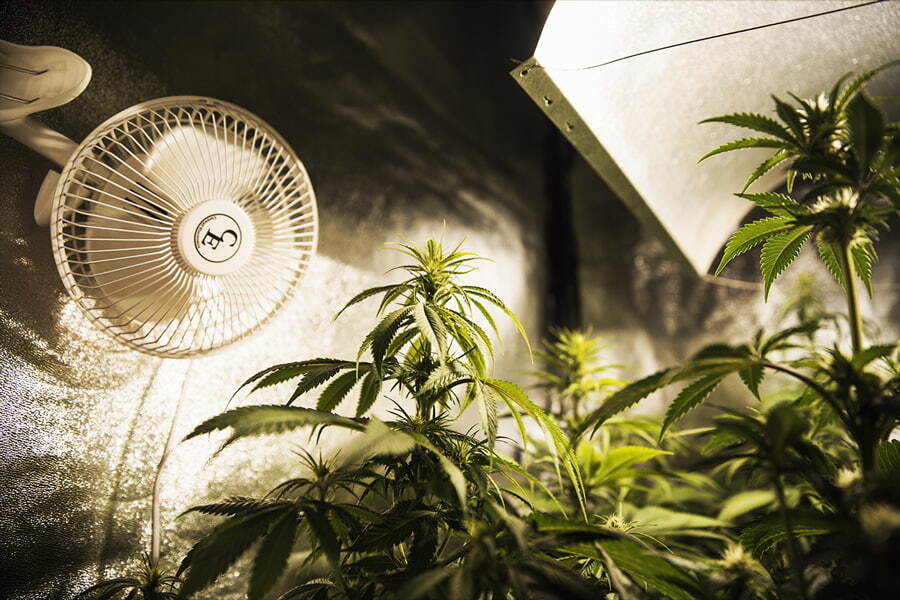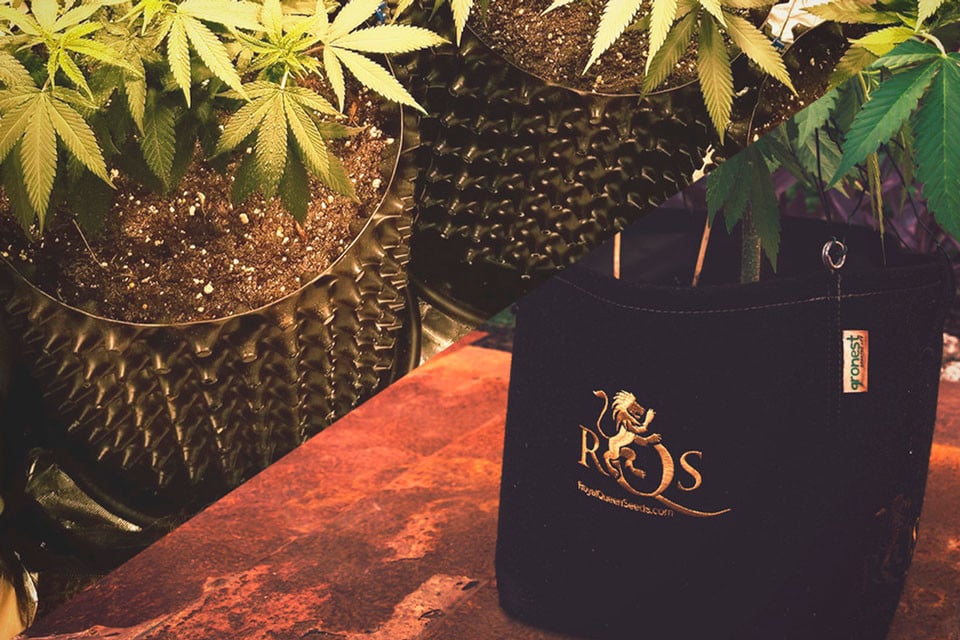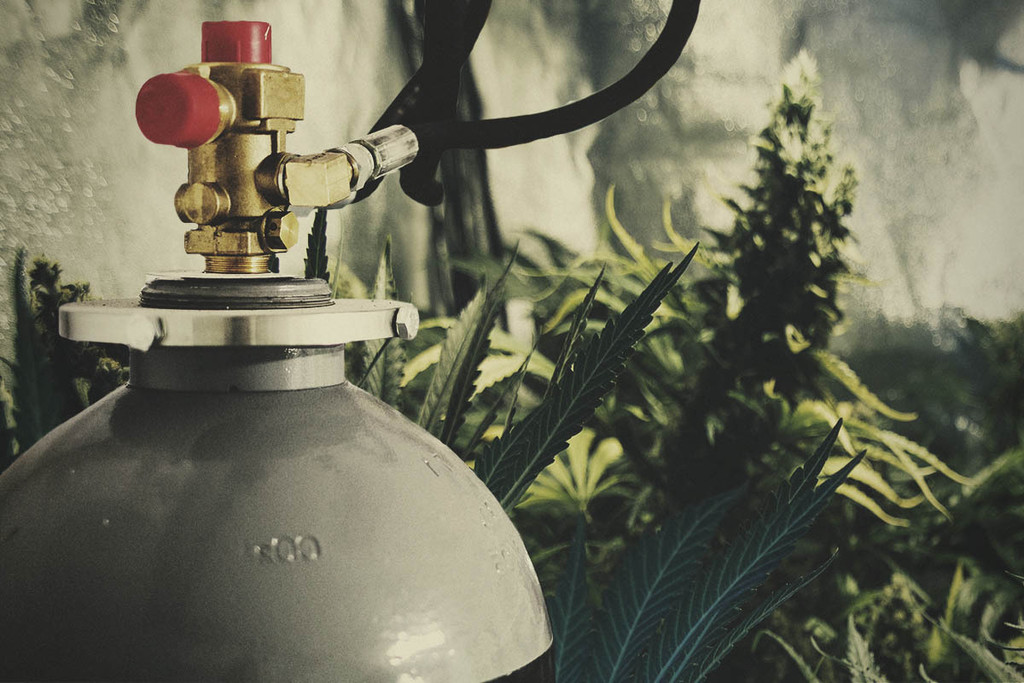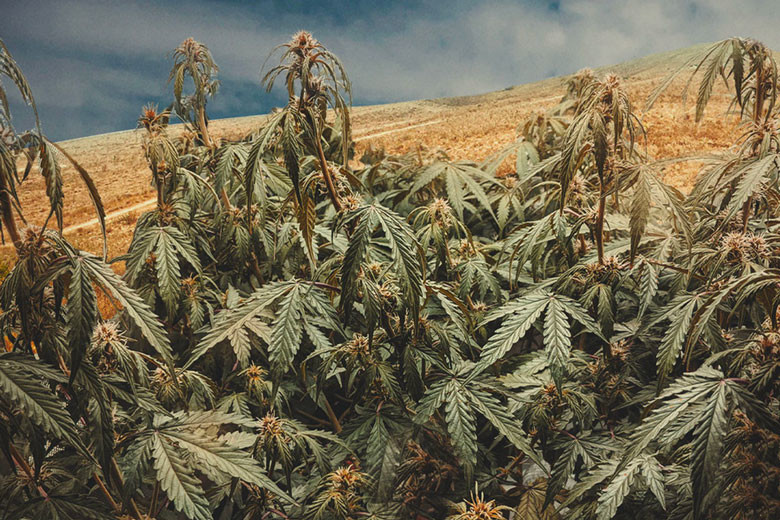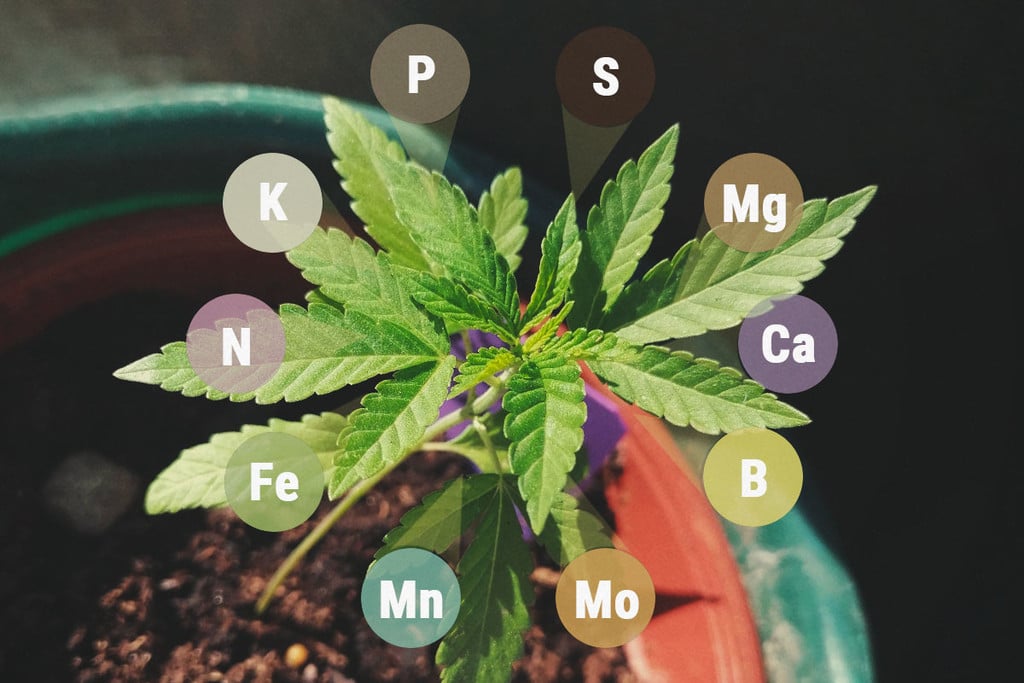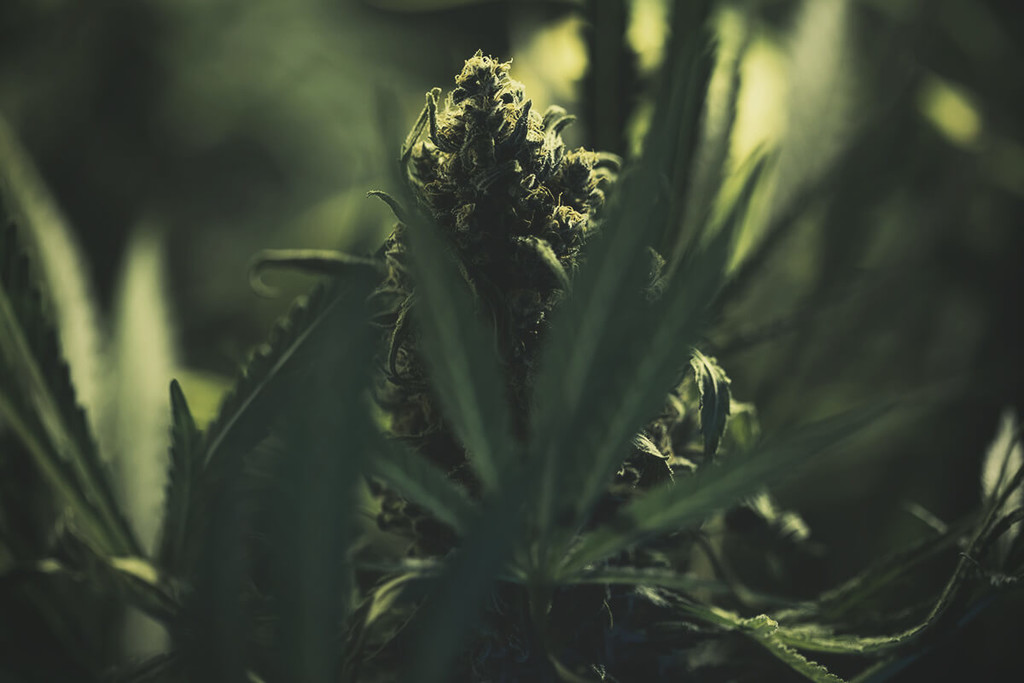.

16 Ways To Increase Your Cannabis Yields
Congratulations for pursuing the cultivation of cannabis. This hobby can get frustrating if you put months of work into a low yield. We have put together a list of sixteen tips for getting the most flowers out of your grow.
Contents:
Growing cannabis is a fine hobby that can secure your personal stash. With months of planning, water and energy usage, you want your plants to produce as many flowers as possible. Find a discrete location where you can cultivate. You can grow outdoors, where you have the advantage of natural sunshine and atmospheric conditions. Growing indoors tends to be more reliable however, as you have a lot more control over that environment. Whichever you choose, there are a number of principles to keep in mind for maximising yields.
First and foremost is the genetics of the strain you're growing. Luckily, we have a selection of very strong, profit-yielding seeds for you to use. There is also the question of whether you're seeds are autoflowering or a photoperiodic strain. If it's the latter, then a very delicate management routine for the plant's lighting is required for satisfying returns. Order your seeds and get your setup ready to go! Here are sixteen ways in no particular order to improve the chances of your photoperiodic plant producing a lot of bud.
Want consistently abundant photoperiod harvests? Get our Pro Growing Guide for expert light schedules, canopy training, and airflow strategies built for large-yield photoperiod grows.
Free Advanced
Growing Guide!

1. Trellising
Sometimes when a plant is struggling to grow, it doesn't even have the strength to support itself. If cannabis plants have a structure bearing their weight, it can help them advance to a more developed stage. A basic technique of gardening is trellising. This is where wooden structures are built to aid and guide the growth of plants. The material can sometimes be wood, but also bamboo or kinds of metal. Any such strong material can be arranged in a mesh or simply as supportive rods. These can keep your plants separated and sturdy whether you're grow setup is horizontal or vertical. A bamboo rod could be enough for your cannabis plant to continue flourishing.


Plant training
As your plant is still vulnerable in the vegetative phase, it is also malleable to training. If you want to guide the development of your plant, this is the phase to do it in. The physical development of your plant could be hampered by branches interlocking from untidy, uneven growth. Subject your plant to low stress training (LST). This is where you spread out the main stem and side branches by separating them carefully with string. This makes your plant grow outwards in a thick bush. String can also be used to keep overlap between your plants tidy. Consider the "screen of green" (ScrOG) method where a grid of string guides the plants towards neater growth.
Training your weed plants is one of the most effective ways to achieve a massive yield. However, it’s important to recognise that training won’t make up for a lack of fundamental needs, such as watering, nutrients, lighting, etc. But once these foundations are set, employing various techniques will increase the overall amount and size of your buds. Training is primarily carried out during the vegetative stage or early flowering stage, as this is when the plant is at its most malleable. Once it starts flowering, it will more or less remain at its current size and shape.
2. Low-Stress Training Techniques
Low-stress training (LST) typically involves gently manipulating plants in order to enhance bud growth. Often, this is achieved by maximising light exposure to all parts of the plant. LST can be carried out on both autoflowers and photoperiod strains, indoors and out. This makes LST one of the most versatile and beginner-friendly types of training.
Tie-Down Method
At its most simple, LST involves bending down the stem and attaching it to the rim of your pot to force even growth and maximise light exposure. In doing so, bud sites that would otherwise be shaded by foliage receive equal light penetration.

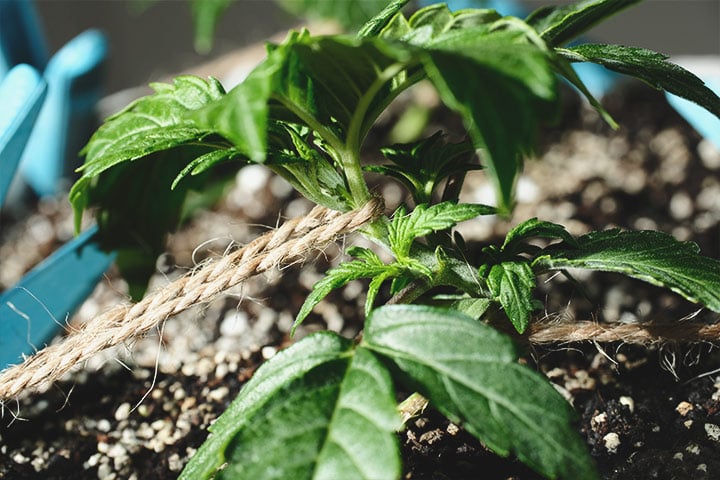
SOG
SOG involves growing lots of very small plants side by side to create a large canopy. Though the yield of each plant will be significantly lower, the yield per metre squared will be significantly larger than plants grown without training.


3. High-Stress Training Techniques
High-stress training (HST) encompasses more intensive techniques that cause damage to your plants in an effort to increase light exposure and direct resources to viable bud sites. On the whole, these methods are not advisable for autoflowering strains, as plants won’t have time to recover before progressing into the bloom phase. Mostly, HST is used for indoor photoperiod plants. Bear in mind that as the plants need to repair themselves, the more intensive the training, the longer the vegetative stage will need to be extended.
Topping
One of the more simple forms of HST, topping simply means cutting the top off of your cannabis plant. Consequently, it will grow back with two stems, which will mean two, rather than one, central cola. This process can be repeated multiple times to multiply bud sites. There’s also a variation of topping called “fimming”. When fimming, instead of cutting the whole top off, you cut off around 75%, which will cause four new shoots, rather than two, to appear.
With both fimming and topping, you must be certain that your plant is still in the vegetative stage before acting. If it has begun flowering, all you will do is cut the main cola off and massively reduce your yield!


Main-Lining
In the quest for marijuana growing tips, main-lining is one of the most intensive and effective solutions for increasing overall yield. It’s like a severe combination of topping mixed with the tie-down method. Essentially, you cut the vegetative plant down to its third node, and then remove any growth below this. You then tie the remaining branches down so they grow horizontally. For maximum yield, you’ll want to create eight main bud sites; so you’ll repeat this process three more times. The result will be eight main colas, instead of one. However, you need to be careful, and understand that the plant will need much more time in the vegetative stage in order to repair itself.
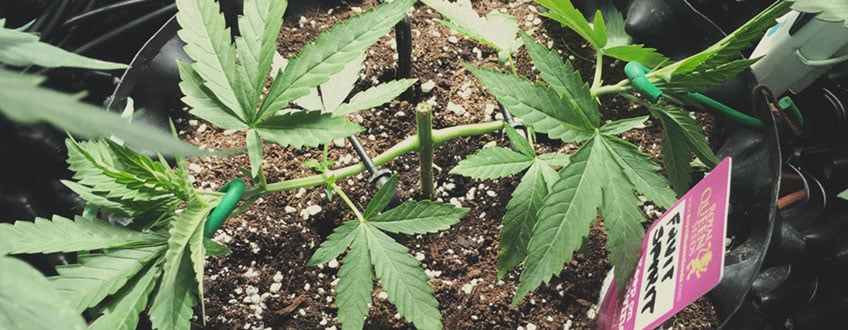

4. Increase container size
One obvious way to increase yield is to scale up your production. This doesn't need to involve taking on more plants than you're capable of handling. With the plants you have committed to cultivating, you may scale up the equipment you're using to grow them. For instance, growing in an 11-litre container of soil may produce good yields. Can you afford a 20-litre container instead? With more space for the plant to grow, a bigger yield can be expected. See if your budget can accommodate a boost to your setup's capabilities. You are making a budget before you start any of this, right? Because that's so important we hope it didn't need to be mentioned.
5. Pot Type
Different types of pots can really impact the growth of your crop, and thus their yield. For best results, serious growers opt for air pots or smart pots. These tend to be made of highly breathable fabrics, and this increased aeration gives the roots plenty of room to breathe and expand, which ensures good health and robust growth above and below the soil.


6. Increase light intensity
Your budget will definitely be profoundly impacted by your lighting setup. This lighting setup should maximise available light with a direct and evenly distributed light source. There are vertical variations circling around a central light source. There are also rows of plants, sometimes tiered, around a light source from above. Check what distance you should keep your plants from your chosen light. Assuming you have control over your indoor lighting setup, you should research energy-efficient lightbulbs that will cut energy costs and reduce the risk of heat stress. Stepping up the intensity of the light source, although expensive, is going to boost the photosynthetic process further.
7. Defoliation
Removing dying and useless leaves from a cannabis plant will free up energy for bud growth. However, this should be done during the flowering stage, when a plant’s energy is being used to grow flowers. Avoid defoliating during the vegetative stage, as you don’t want to inhibit growth. Start near the bottom and remove leaves that are perhaps yellowing and wilting. The plant is naturally pruning itself when this happens, removing unnecessary growth. However, you can take matters into your own hands and remove a lot more. Obviously, the plant needs leaves in order to photosynthesise, so don’t be too aggressive. Consider removing leaves that are obscured from the light and probably using more energy than they create.


8. Side Lighting
Just like plant training techniques aim to maximise the plant’s exposure to light, another way to achieve this is by adding supplemental lighting. But rather than simply adding more overhead lights, consider investing in side lighting. In doing so, you effectively illuminate parts of the plant that are usually overshadowed by the growth above. So rather than most of the light being absorbed by the canopy, there is a much more even distribution across the plant(s). The result? What would typically turn out to be small, “popcorn” buds will grow to become sizable specimens in their own right.
9. Climate control
Avoiding heat stress and extremes of cold will help your plants avoid damage. Such damage would only drain the plant's energy, which could be going towards a more plentiful harvest. A big advantage of indoor growing is the ability to control the temperature of your growing environment through a ventilation system. The recommended temperature while receiving light is between 70–85° F, or 21–29° C. The recommended temperature without light is between 58–70° F, or 14–21° C. Humidity is also crucial to monitor, with levels between 50–70% being perfect, depending on the stage of the plant's development.

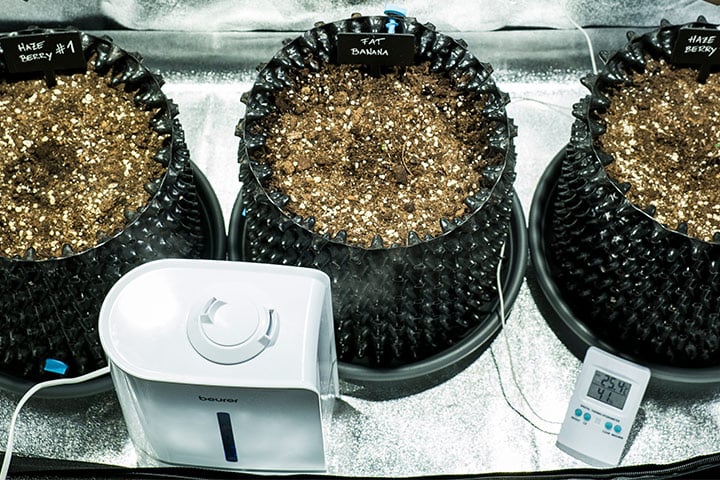
10. Additional CO₂
Unlike us, plants breathe CO₂ during the day and use this to power themselves. Though the evidence is not entirely conclusive, many people are of the opinion that introducing extra CO₂ into a grow can increase the overall yield. While this may be the case, it is not recommended for the average home grower. Methods to introduce CO₂ tend to be expensive, and the grow room has to be well-sealed in order for it to work. Likewise, though CO₂ may not be toxic, it can still be dangerous to push oxygen levels down. So we recommend considering this method only once all others have been mastered.
11. Nutrition
Something that will need to be precise throughout every stage of cultivation is nutrition. This includes the high demand for water which must be met. Bare that in mind if you live in a drought-prone region. There are nutrients the plant needs, but be careful not to provide too much of them. Yellow tips on your plant are a sign of too many nutrients, potentially spoiling the plant. A key balance to get right is between the nitrogen, phosphorus and potassium in your fertiliser. During the vegetative stage, there should be high nitrogen, medium phosphorus and high potassium levels. During the flowering stage, there should be low nitrogen, medium-to-high phosphorus and high potassium. It's also possible to use certain Epsom salts to provide sulphur and magnesium for the plant's health.
12. pH and PPM
One of the first things you’re likely to learn when embarking upon your cannabis growing journey is that weed loves acidic soil: ideally, somewhere between 6.0 and 7.0 pH. Taking good care to keep the soil within these limits means your plants have the greatest access to nutrients. Too high or too low, and the roots’ ability to absorb nutrients decreases, ultimately reducing yield. Once you’ve got this down, you need to master feeding. A good understanding of nutrients and parts per million (PPM) will allow you to tinker with your plants and eke the best results from them. Most pH meters should also measure PPM and EC (electrical conductivity), allowing you to accurately judge the nutrient balance in your soil and water, and adjust accordingly.
13. Molasses
Molasses, that syrupy ingredient in your kitchen cupboard, can be used to increase bud size. Ultimately, its main contribution is sugar. Sugar fuels a cannabis plant’s metabolism and helps it send signals around itself. That said, you can also use honey or syrup. However, molasses is packed with other nutrients and minerals, all of which are beneficial to your plant. So if you’re going to add a sugary treat to your soil, make it molasses.
14. Hydroponics
Using a hydroponic setup can increase yields by up to a massive 20%. This is because the root system has direct access to a perfectly dialled nutrient solution. Moreover, hydro tends to speed up the grow time a little, too. So, why isn’t everyone using hydro ops? They can be quite involved to set up, and if they go wrong, they go wrong very quickly and can be difficult to rectify. Whereas a soil grow allows for a little more human error when it comes to nutrients, for example, a hydro grow is going to be far less forgiving. What’s more, a hydro grow requires a dedicated space, whereas plants grown in soil can be placed in confined spaces like closets and cupboards.

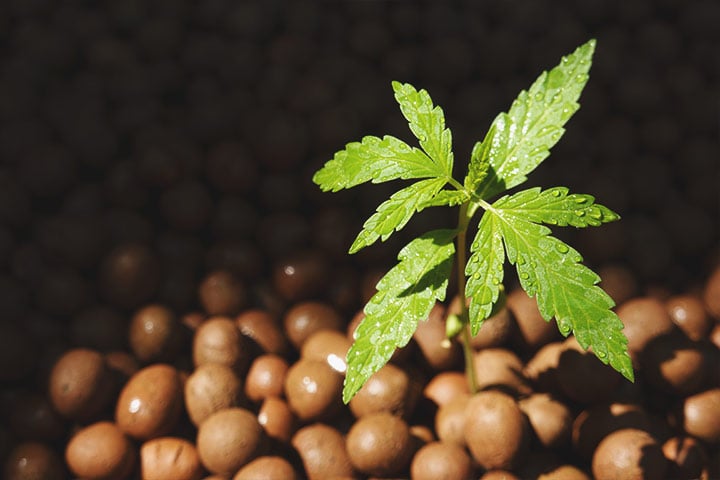
15. Time your harvest
This leaves one final but very crucial aspect to get right. As your plant enters the flowering stage, the pungent aroma will be strong. You will be tantalised by the months of hard work paying off before your very eyes. If you are patient enough to grow marijuana, then you have the temperament to resist temptation a little longer. Don't be in a rush to harvest the flower as you may do it too soon and lower your yields. There is a 2–3 week window in which you can harvest the buds. If you hold on for a week or two longer, it can increase the size of buds by up to 25%. It's worth doing everything you can to maximise your yield, even waiting a little longer.
16. Cannabis Journal
In terms of how to make buds bigger during flowering, there are multiple avenues you could take. However, experience is always a major player in the success of an operation. Ultimately, practising different cultivation techniques, and learning all you can about the nuances of the plant, will lead to bigger, better harvests. There are no quick hacks to experience. However, using a cannabis journal is a great way to record your progress and hone your skills. Record every aspect of your grow, reflect on it, and see what worked best. Next time, discard that which failed and use that which worked, and you should see improvements. By incrementally increasing your skills, you will find that your yields grow in kind.
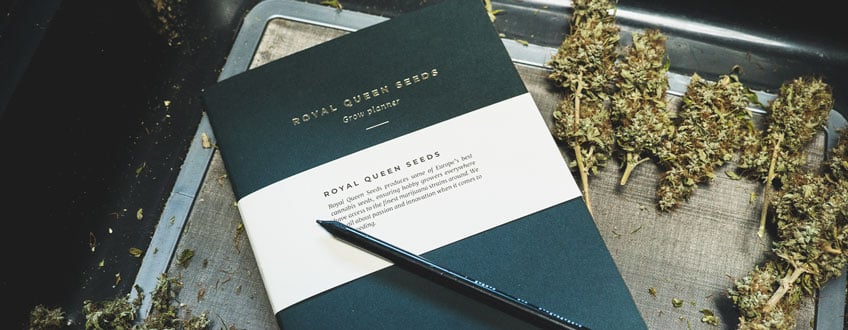

What’s the Key to Bigger Buds?
So, the takeaway? Just grow! Grow, and don’t be too worried about failure. Cultivating cannabis is a massive learning curve. Obviously we all want massive yields of the most potent bud around, but you’re likely to be disappointed if you set your expectations too high. For novice growers, getting any kind of crop is an achievement.
In the quest for monster buds, row it back a step. Focus on growing well, practising, and the rest will follow naturally.



























